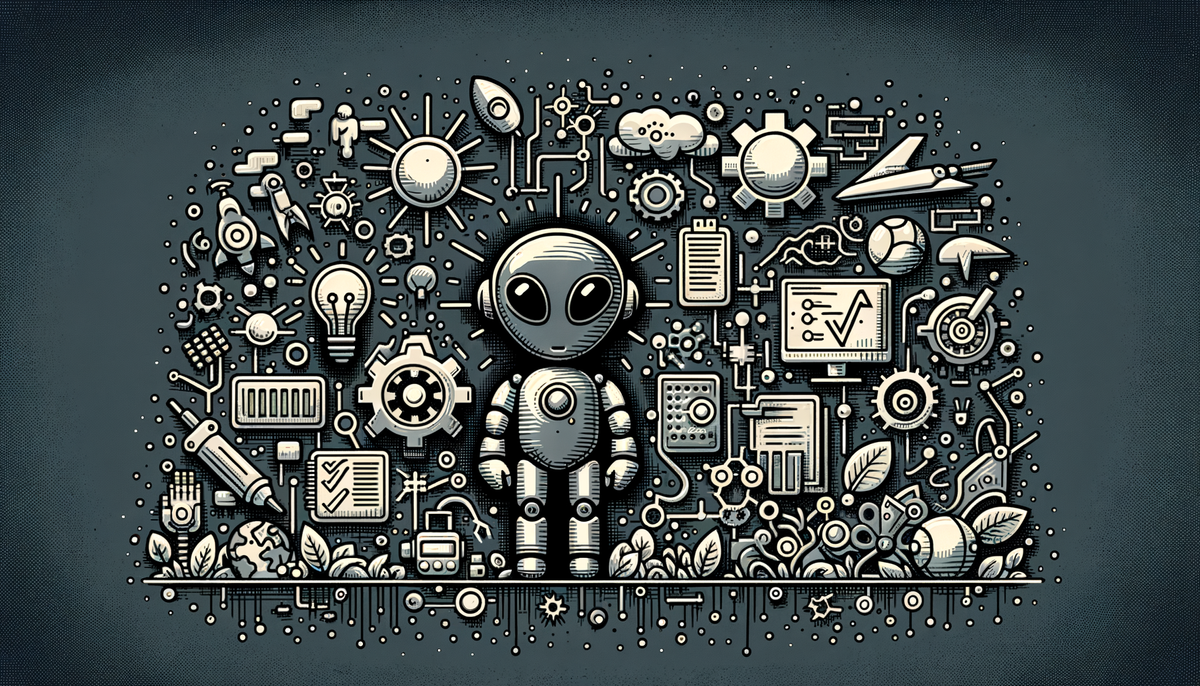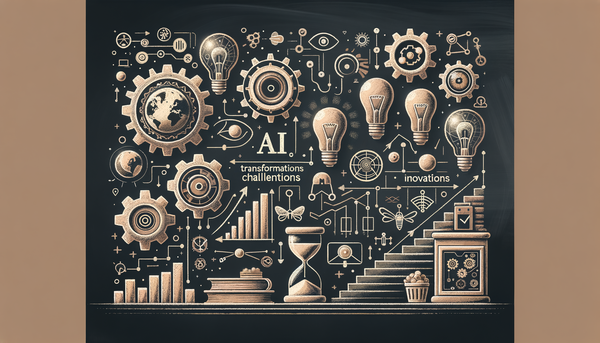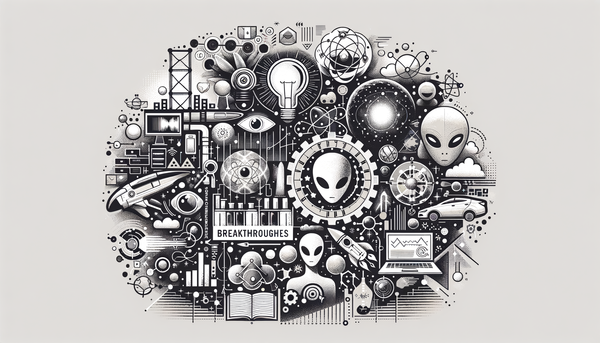Security, Finance, Ethics, and Future Insights

Bill Gates’ striking prediction about AI’s disruptive force in the workplace echoes a broader narrative unfolding across industries—from safeguarding critical human expertise in coding, biology, and energy to revolutionizing hardware performance, creative expression, media ethics, finance, and security. In an era of rapid technological evolution, every layer of society is being reshaped by AI’s relentless momentum.
AI’s Transformative Impact on the Workforce
Bill Gates recently cautioned that a tidal wave of artificial intelligence could soon displace many conventional jobs, especially those involving routine tasks and repetitive decision-making. This warning, as reported by Hindustan Times, underlines a critical pivot point in the modern employment landscape. However, amid these shifts, three core sectors—coding, biology, and energy—are uniquely positioned to thrive.
For instance, while AI is increasingly capable of generating and refining code, human developers still steer its direction through system oversight, troubleshooting, and driving innovation. Similarly, in the realm of biology, AI can enhance diagnostics and data analysis, but it cannot replicate the creative insights that lead to groundbreaking discoveries. Energy, with its intricate challenges in strategic management and infrastructure oversight, remains a domain where human expertise is irreplaceable.
"Artificial intelligence is the new electricity."
—Andrew Ng, Machine Learning Yearning
These insights provide a nuanced perspective: instead of an outright replacement, AI’s evolution is paving the way for a collaborative partnership between human ingenuity and machine efficiency. Other recent AI updates further illustrate how regulatory and technological trends are interwoven, urging businesses to prepare for a future where human-centric roles remain central even as automation accelerates.
Cutting-Edge Hardware and Resource Management in AI
The quest for greater computational efficiency in AI has spurred groundbreaking partnerships in the hardware sector. AMD’s collaboration with Rapt AI, as detailed in the TechTarget article, represents a significant stride forward. By integrating Rapt AI’s resource management software, AMD is optimizing its Instinct lineup (including the MI300X, MI325X, and the upcoming MI350 series) to ensure that GPUs operate at peak performance during intensive AI model training and inference tasks.
This innovative approach addresses a common pain point in enterprise IT—overprovisioning and inefficient resource allocation. As enterprises strive for cost savings and reliable performance, technologies that monitor and maximize hardware utilization are becoming increasingly critical. AMD’s strategy also signals a competitive stance against industry giants like Nvidia, underscoring the heightened battle for supremacy in the rapidly expanding AI hardware market.
Mapping this to the broader digital transformation narrative, similar discussions on operational efficiency can be found in our other AI-focused updates, including insightful pieces exploring AI’s evolving roles in media and market trends. The progress in hardware underpins not only the performance of AI systems but also their capability to manage complex tasks across various industries.
Reimagining Creative Expression with AI Image Capabilities
While AI is celebrated for its prowess in data analytics and automation, its creative dimensions are equally stirring debate. One of the most intriguing advancements is in the realm of visual content generation. OpenAI’s updated ChatGPT, now equipped with integrated image generation and editing functionalities, has been hailed for its ability to produce visually captivating and emotionally stirring images, as shared by TechRadar.
Users have marveled at the platform's capability to transform mundane scenarios into dramatic, vibrant scenes—ranging from wintry landscapes featuring spirited robins to cheerful family outings on sunlit beaches. However, even in this artistic exploration, challenges remain. The AI engine struggles particularly with rendering legible text on images. Despite its flair for visual storytelling, creative tasks that require nuanced text placement still evoke frustrations, highlighting a gap between technological potential and practical usability.
These mixed outcomes underscore the dynamic tension in AI research: the relentless pursuit of perfection and the inevitable hurdles encountered along the journey. Such experiences resonate with the familiar adage that “innovation is a journey, not a destination.” As developers work to refine these capabilities further, users are reminded that every breakthrough is accompanied by lessons that steer future improvements.
Upholding Ethical Standards in AI-Driven Media
Controversies surrounding AI are not solely confined to performance issues; ethical concerns have taken center stage in recent discussions. A notable example involves Cleo AI, which has agreed to a $17 million settlement with the U.S. Federal Trade Commission over allegations of consumer deception, as reported by Reuters. While the details of the settlement remain intricate, the episode serves as a potent reminder of the ethical responsibilities entailed in deploying AI technologies.
In a similar vein, the media industry is grappling with its own set of challenges with regard to AI. The forthcoming advertising campaign by the News/Media Alliance, set to launch in April 2025, seeks to confront the unauthorized use of media content by AI. Titled around the resonant theme “Stealing is un-American,” the campaign is an effort to safeguard intellectual property rights against aggressive AI algorithms that might otherwise appropriate content without due compensation. More details on this initiative are available through their dedicated report on the Wisconsin Newspaper Association website.
These controversies signal an important crossroads for developers, policymakers, and content creators alike. They call for a balanced approach where technological advancements are coupled with robust legal and ethical frameworks, ensuring that AI’s disruptive capabilities do not undermine the value of creative labor or consumer trust.
Monetizing AI in Finance: A New Revenue Frontier
Economic projections paint an astonishing picture for AI’s future in the financial sector. According to Yahoo Finance, the AI in finance market is expected to soar from USD 31.54 billion in 2024 to a whopping USD 249.53 billion by 2032. This explosive growth, boasting a CAGR of 34.3%, is driven by the increasing need for automation—particularly in fraud detection, risk management, and personalized customer service.
Financial institutions are harnessing AI to navigate complex challenges, from real-time anomaly detection in transactions to enhancing the overall customer journey with AI-driven chatbots and recommendation systems. This blend of precision and personalization is rapidly redefining banking and investment strategies. For example, algorithmic trading systems have become indispensable tools for hedge funds and institutional investors, allowing them to optimize portfolio decisions based on real-time market conditions.
Nevertheless, the road to widespread AI adoption in finance is strewn with hurdles. Data privacy concerns and a maze of regulatory compliance issues are significant factors that many institutions must address. Despite these challenges, the overarching trend is clear: AI is set to revolutionize the financial industry, ushering in an era where innovative risk management and customer-centric services redefine banking norms.
Securing the Future: AI in Modern Security Systems
In today’s increasingly digitized world, the intersection of AI and security has emerged as a vital frontier. Companies like Hakimo are fiercely championing an AI-first approach to modern security, as explored in a compelling piece on Forbes. Their innovative systems leverage real-time machine learning algorithms to analyze vast streams of data, thereby enhancing threat detection and enabling preemptive responses.
This transition from traditional security methods to AI-driven systems marks a paradigm shift. Instead of passively relying on alarms or sporadic manual oversight, AI-powered defenses anticipate potential breaches and dynamically adjust to evolving threats. Yet, this transformation brings with it an imperative need for transparency and accountability. Discussions around biases in algorithmic decisions and data privacy concerns remain central, emphasizing that even as we embrace these new systems, a balanced, collaborative approach is necessary.
Hakimo’s collaborative intelligence model, which aims to integrate human oversight with AI capabilities, provides an instructive blueprint. It illustrates that superlative technological advancement does not mean sidelining human judgment. Such strategies ensure that while AI fortifies our defenses, the critical thinking and ethical considerations that only humans offer remain at the helm.
Integrating Insights: The Road Ahead
A common thread running through these narratives is the undeniable interdependence between human expertise and AI’s algorithmic power. Whether it’s Bill Gates' cautious optimism about the future of coding, biology, and energy, or the innovative hardware strategies by AMD, the message is clear—AI is not about replacing humans but about augmenting human capabilities in profound ways.
Reflecting on these advancements, I’m reminded of a quote by Mark Zuckerberg: “AI is one of the most important fields of technology, because it has the potential to automate thinking itself, which is something we've never been able to do before.” Such sentiments encapsulate the critical balance between embracing innovation and maintaining the integrity of human oversight.
Across businesses, from financial institutions ramping up their AI-powered fraud detection systems to media alliances fighting for intellectual property rights, the future is one of collaboration. The integration of AI into our daily lives isn’t just about cost savings or enhanced performance—it’s about reimagining our work, our security frameworks, and even our creative expressions.
For readers interested in the broader implications of AI, previous updates on AI’s transformative power on various industries and discussions on job security in this evolving landscape offer valuable context. These explorations reaffirm that, despite the inherent challenges, AI has the potential to unlock new opportunities and address longstanding hurdles in efficiency and innovation.
As we stand at this critical juncture, the story of AI continues to unfold—a story marked by both transformative technology and the irreplaceable spark of human creativity. The journey ahead is complex and fraught with challenges, yet it is equally filled with promise and opportunity for those who dare to innovate responsibly.




